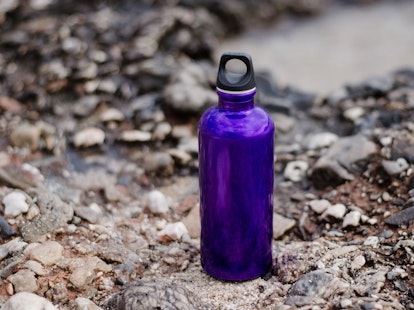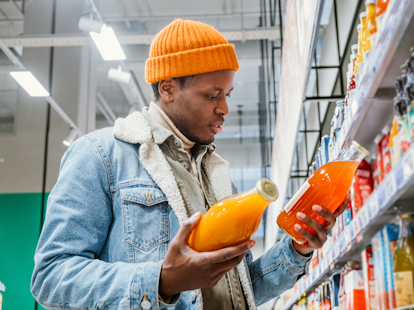Switzerland has published a new regulation establishing requirements for 10 groups of food contact materials and articles as part of the nation’s new ‘Food Law 2017’. The new law on food contact materials and articles will become effective in two phases starting May 1, 2017.
In December 2016, the Swiss Federal Office for Food Safety and Veterinary Affairs (FSVO), [Bundesamt für Lebensmittelsicherheit und Veterinärwesen (BLV)], announced [1] an amendment to the legislation on food safety that includes food contact materials and articles (FCMs), toys, cosmetics and other consumer goods. The Consumer Goods Regulation of the Federal Department of Home Affairs [Bedarfsgegenständeverordnung Verordnung des Eidgenössischen Departements des Innern (EDI)] relating to Regulation of the EDI on materials and articles intended to come into contact with food establishes requirements for 10 groups of FCMs. These are active and intelligent materials, ceramics, glass, enamels and similar articles, metals and alloys, paper and cardboards, paraffins, waxes and dyes, plastics (which also includes epoxy resins), printing inks, recycled plastics, regenerated cellulose films and silicones.
Under the law, FCMs are to be manufactured using good manufacturing practices so that they do not transfer their constituents to food in quantities which could endanger:
- Human health, or
- Bring about an unacceptable change in the composition of the food, or
- Bring about a deterioration in the organoleptic characteristics of the food
The Swiss law on FCMs contains a number of important provisions, which includes:
- Utilizing the migration limits for lead and cadmium in ceramics from Directive 84/500/EEC [2] for food contact ceramics, glass, enamel and similar materials
- Adopting the specific migration limits for eight heavy metals (aluminium, barium. cobalt, copper, iron, lithium, manganese and zinc) in plastics from Regulation (EU) 2016/1416 [3], amending Regulation (EC) 10/2011
- Adopting test conditions for overall and specific migrations for plastics from Regulation (EC) 10/2011 of January 14, 2011 [4]
- Requirements for epoxy resins – these are under the scope of plastics
- Prohibiting the use of bisphenol A (BPA) in polycarbonate baby bottles
The amendment contains two effective dates:
- May 1, 2017 for the Regulation on food contact materials and articles except for the prohibition of bisphenol A (BPA) in polycarbonate baby bottles
- May 1, 2018 for the prohibition of BPA in polycarbonate baby bottles
Highlights of the Swiss law on food contact materials and articles are summarized in Table 1.
| Regulation of the EDI relating to materials and articles intended to come into contact with food (Consumer Goods Regulation) | ||
|---|---|---|
| Section | Food Contact Material | Highlight |
| 4 | Metals and metal alloys | ≤ 0.05% lead (Pb) |
| Tin and its alloys | At least 97% tin purity and ≤ 0.05% Pb and ≤ 0.01% Cd Tin as a coating of steel | |
| 5 | Plastics |
Overall migration |
| 6 | Recycled plastics |
|
| 7 | Regenerated cellulose films |
|
| 8 | Ceramics, glass, enamels and similar articles |
|
| 9 | Paper and cardboard articles | Food must be able to be separated from these materials |
| 10 | Paraffins, waxes and dyes | Paraffins and waxes
Dyes |
| 11 | Silicones | To be manufactured using substances in Annexes 2 and 9 |
| 12 | Printing inks |
|
| 13 | Active and intelligent materials and articles |
Example of label NICHT ESSBAR
|
The following legislation and Annexes in German, French or Italian can be downloaded from the Consumer Goods Section (Gebrauchsgegenstände [5]) of Regulations and Explanations, Food Law 2017, in the FSVO website:
- Ordinance on materials and articles intended to come into contact with food (Consumer Goods Regulation)
- Annex 2 ‘Plastics’
- Annex 9 ‘Silicones’
- Annex 10 ‘Printing inks’
ABBREVIATIONS
DoC: Declaration of Compliance
CMRs: Carcinogenic, Mutagenic or Reprotoxic
SGS technical experts have extensive knowledge and testing experience in materials and articles in contact with food. They work to ensure that your products meet the appropriate regulations for food contact materials and pave the way for compliance. From overall migration test to expert advices on emerging regulations and compliance issues and documentation review, SGS is the partner to trust. Please do not hesitate to contact us for further information or visit our website.
For enquiries, please contact:
Hing Wo Tsang
Global Hardlines Information and Innovation Manager
t: +852 2774 7420
Stay on top of regulatory changes within your industry: subscribe to SafeGuardS!
© SGS Group Management SA - 2016 - All rights reserved - SGS is a registered trademark of SGS Group Management SA. This is a publication of SGS, except for 3rd parties’ contents submitted or licensed for use by SGS. SGS neither endorses nor disapproves said 3rd parties contents. This publication is intended to provide technical information and shall not be considered an exhaustive treatment of any subject treated. It is strictly educational and does not replace any legal requirements or applicable regulations. It is not intended to constitute consulting or professional advice. The information contained herein is provided “as is” and SGS does not warrant that it will be error-free or will meet any particular criteria of performance or quality. Do not quote or refer any information herein without SGS’s prior written consent.




